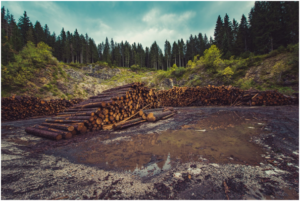Are you one of the people who collectively own over half of America’s 766 million acres of forestland? If yes, you’re likely keen to cash in on your investment once your trees reach maturity. But selling trees for timber is nothing like selling a car or property.
Not only do you need to find buyers and negotiate a fair price, but you also need to understand current prices for forest products (which fluctuate wildly) and ensure contract terms are withheld.
If you’re uncertain how to proceed with selling your trees, read on for guidance.
Get Planning
When it comes to selling timber, it’s essential to have the right forester by your side. Most states have a local service forester you can contact.
These tertiary-educated agroforestry professionals help landowners create a forest management plan. They can’t oversee sales, but they can advise on growth practices to get the best price out of your trees.
To help with sales, you’ll need to hire a consulting forester. They help you to get the maximum profit for your cut trees.
Understand Your Product
Like any industry, the value of your forest is based on a wide range of factors:
- Tree species
- Tree size
- Tree health
- Harvesting landscape
- Current market conditions
If you want to learn how to sell timber with the best return on investment, spend time researching the timber industry. Read industry publications, join forestry organizations, keep abreast of statistical studies by government agencies, follow industry leaders, and pick the brain of your forester.
Before you sell, ask your forester to make an inventory of your trees. That way, you have an estimated sale value before you approach any buyers.
Find Buyers and Start Selling
Most consulting foresters will have a list of respected buyers you can advertise to. If you live in a forestry area, you can also advertise in your local paper.
Include in your advertisement:
- Your contact details
- Where your land is
- The timber species and quality
- How large the harvest is
- Road access
Solicit bids and review both the buyer’s credentials and the quality of their credit. You can also choose to auction your property timber.
Finalize the Contract
Once you have a successful bid in your timber sale, you need to draw up a contract outlining the terms of the sale. This will include the sale price (and payment terms), harvest conditions, and other responsibilities for each party.
Check on the Harvest
Just because the contract’s signed doesn’t mean you can let your guard down. Be sure to turn up at least once during the harvest to ensure the buyer is upholding the contract terms.
Are they using HIAB loaders as agreed? Are they taking trees from the correct portion of land?
Forest Products: A Steady Investment
The steps outlined above explain how to prepare for a sale and manage it once an agreement is reached. But, of course, you also need to keep updated with current timber prices and other aspects of the forest products market.
Thankfully, there’s no big rush with timber. If you’re uncertain whether the time is right to sell, you can always leave your trees in the ground for a year or three.







